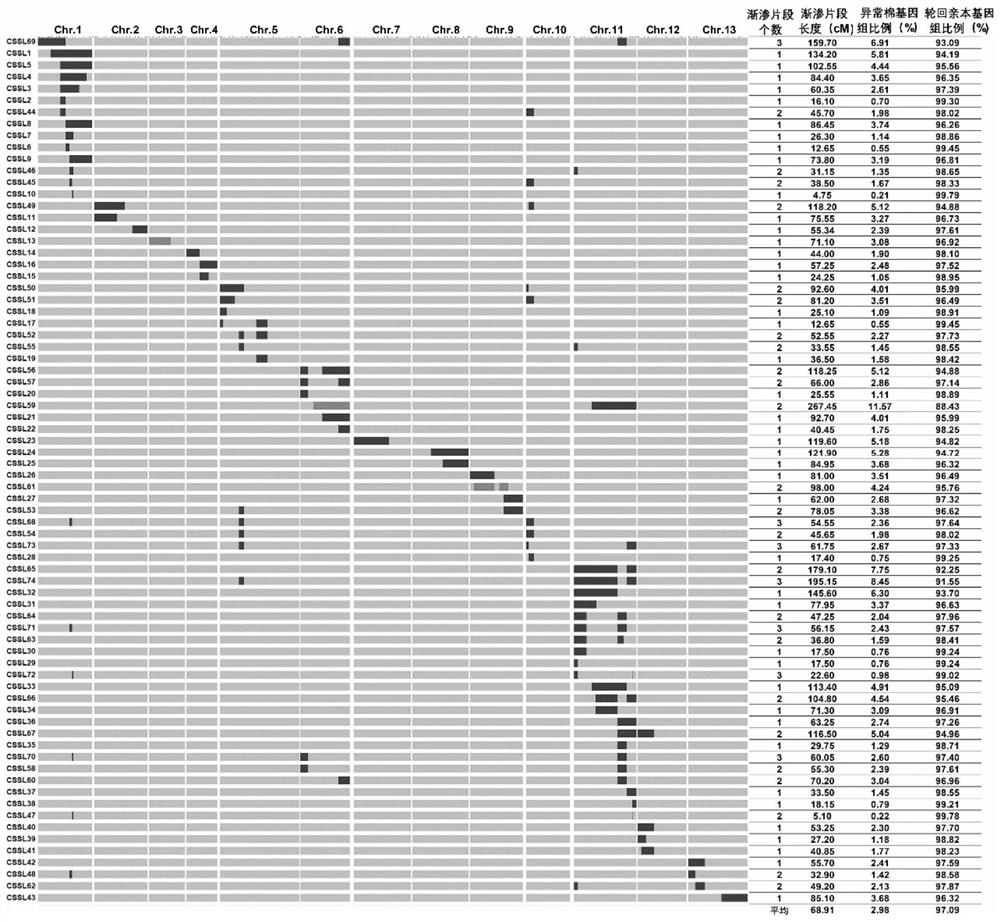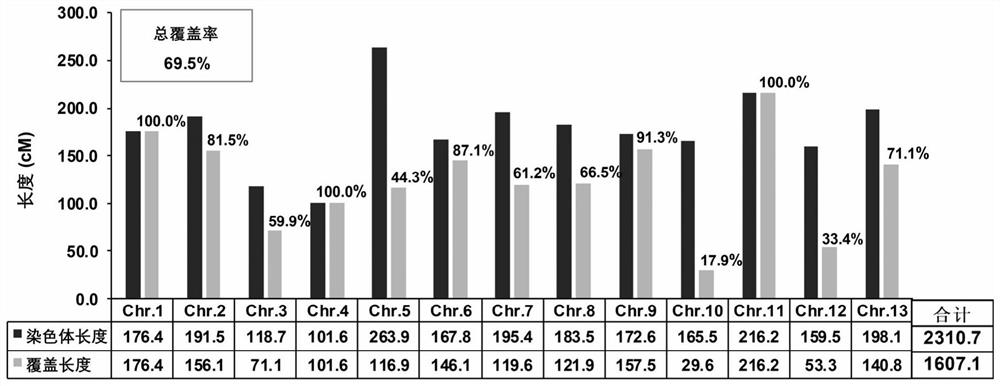Abnormal Cotton Chromosomal Fragments and Their Molecular Markers That Can Improve Cotton Fiber Strength
A technology of molecular markers and fiber strength, applied in DNA/RNA fragments, measurement/inspection of microorganisms, angiosperms/flowering plants, etc., can solve problems that restrict genetic improvement of cotton fiber quality, complex genetic mechanism, etc., and achieve rapid and accurate identification stability, speed up the breeding process, and improve selection efficiency and breeding speed
- Summary
- Abstract
- Description
- Claims
- Application Information
AI Technical Summary
Problems solved by technology
Method used
Image
Examples
Embodiment 1
[0040] Example 1. Determination of Chromosomal Segments Related to Cotton High Fiber Strength Traits and Development of Related Molecular Markers
[0041] The high-fiber-strength cotton in the present invention is cultivated by the following steps:
[0042] Using upland cotton 86-1 as a donor, crossing with the male abnormal cotton to obtain triploid F 1(A 1 D. 1 B 1 ), the hexaploid F 1 (A 1 A 1 D. 1 D. 1 B 1 B 1 );
[0043] Using the hexaploid as the female parent, cross with the parent Su 8289 to obtain the pentaploid A 1 A 1 D. 1 D. 1 B 1 , plant all received seeds, and obtain 97 individual plants;
[0044] The obtained pentaploid was backcrossed with Su 8289 to obtain BC 2 f 1 The seeds were all planted, and a total of 384 single plants were obtained, and 50 recombinant types were obtained, of which 36 recombinant types were fertile;
[0045] Will BC 2 f 1 All the individuals of Su 8289 were backcrossed, all planted, and a total of 4331 BC were obtain...
PUM
 Login to View More
Login to View More Abstract
Description
Claims
Application Information
 Login to View More
Login to View More - R&D
- Intellectual Property
- Life Sciences
- Materials
- Tech Scout
- Unparalleled Data Quality
- Higher Quality Content
- 60% Fewer Hallucinations
Browse by: Latest US Patents, China's latest patents, Technical Efficacy Thesaurus, Application Domain, Technology Topic, Popular Technical Reports.
© 2025 PatSnap. All rights reserved.Legal|Privacy policy|Modern Slavery Act Transparency Statement|Sitemap|About US| Contact US: help@patsnap.com



